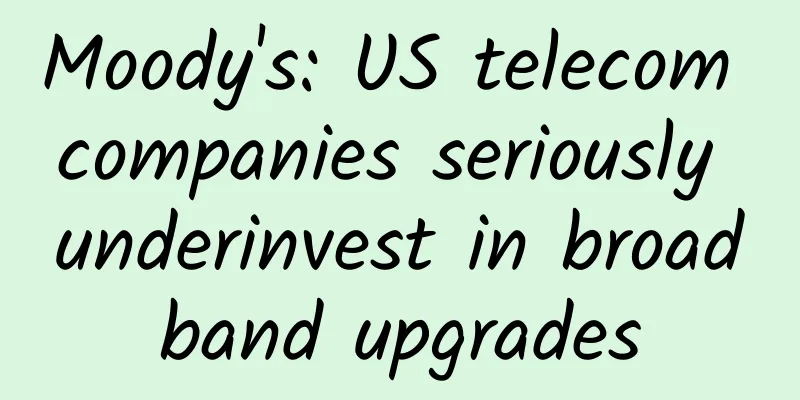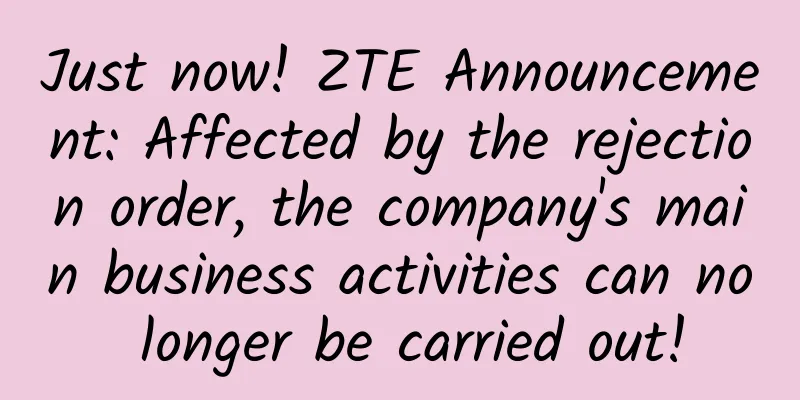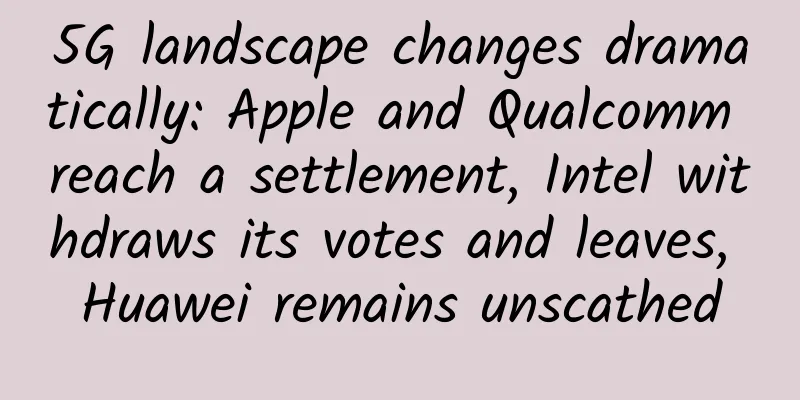Moody's: US telecom companies seriously underinvest in broadband upgrades

|
According to foreign media reports, Moody's, a well-known rating agency, pointed out that for some time, the monopoly of wired broadband in most parts of the United States has been intensifying, and many telecom companies have refused to upgrade unnecessary DSL customers - they are shifting their business focus to content and media (representative cases include AT&T's acquisition of Time Warner and Verizon's acquisition of AOL and Yahoo), while other telecom companies have also shifted their focus from residential broadband to corporate services (such as CenturyLink and Windstream). Few companies are willing to risk angering investors to upgrade copper wire networks to fiber networks at a real scale.
If you understand this, you will understand what Moody's said in its newly released report "Domestic Telecom Companies Underinvest in Broadband - Intentional." "With the exception of Verizon's FiOS business, the U.S. telecom industry has significantly underinvested in broadband," said Mark Stodden, vice president and senior credit officer at Moody's Investors Service. "Given the need for additional capital, cable operators will not see meaningful market share gains." In other areas outside of Boston, Verizon has also frozen its FiOS deployment as the company shifts its focus to wireless and advertising to millennials through its Go90 streaming video service. The results are clear. In the third quarter of 2016, there were 625,000 net broadband subscriber additions, with about 99% going to cable TV providers. Cable companies added 775,000 broadband customers last quarter, while telecoms lost 150,000 net broadband customers during the same period. Telecoms have lost net broadband customers in five of the past six quarters, with companies like CenturyLink and Frontier leading the pack in the number of subscribers that have switched to cable TV providers. This trend is expected to intensify in 2017, when most telecom companies will be forced to upgrade their customers if their business is located in housing developments or other areas where fiber has already been deployed and expansion is expensive. The end result will be less competitive than before, leading to higher fees and customer skepticism about the service of domestic cable operators. |
>>: Pan-Sahara fiber optic backbone network receives RMB 320 million in financing from AfDB
Recommend
What exactly does edge computing mean?
The word "edge" has been given a new de...
Huawei's new generation of 400GE data center switches enable new infrastructure and stimulate new momentum
[[334907]] Hu Kewen, President of Huawei's Da...
The greater development of 5G lies in industrial applications
[[181724]] Some people say that 4G has changed ou...
Network-oriented, NPMD achieves 80% of functions with 20% of investment
An organization once worked with MIT to interview...
The third generation of SD-WAN security
If local Internet access is not provided to branc...
Huawei and its global partners work together to build a full-scenario smart life
【51CTO.com original article】 Normal 0 7.8 磅 0 2 f...
Use wireshark to analyze tcpdump network data packets to quickly troubleshoot and solve the frequent abnormal TCP connection disconnection problem of OceanBase in a certain environment
1. Problem phenomenon A customer reported that in...
Security Theory: Learn how to respond to cyber terrorism
[51CTO.com Quick Translation] There has been a lo...
Key Points in CCIE Exam - MPLS VPN Technology
MPLS VPN technology is a key point in the CCIE ex...
5G private network development will accelerate in 2024
The growing demand for fifth-generation network s...
1Gbps unlimited traffic server $59/month-E3-1270V2/16G memory/500G SSD/Los Angeles data center
Many friends are sensitive to traffic and feel th...
Performance improvements of Http/2 compared to Http/1.1
What has changed since HTTP/1.1 was invented? HTT...
How are the two engines of future digital transformation: connectivity + cloud grounded?
[51CTO.com original article] After the statement...
Experts interpret Huawei's "recipe" for smart cities: taking a rational, scientific and pragmatic approach
[51CTO.com original article] Not long ago, the 21...
China and the United States compete in autonomous driving, 5G may become the "decisive factor"!
With the rise of autonomous driving technology an...









